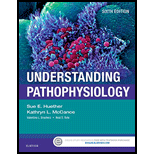
To describe: Hormones.
Concept introduction: The endocrine system is the chemical signaling system that uses blood vessels as the information channels. The endocrine glands are ductless organs located within organ systems and contain groups of endocrine cells that secrete their hormones directly into their surroundings.
Explanation of Solution
Endocrine cells or neurosecretory cells secrete hormones into the extracellular fluids, which are signaling molecules. The secreted hormones reach the target cells through the bloodstream. Hormones bind only to specific cells based on the corresponding receptors, and they act through chemical signals. Hormones maintain homeostasis and regulate growth, development, blood pressure,
Hormones are categorized into three major types such as polypeptides, steroids, and
To explain: The functional mechanism of hormones.
Concept introduction: The endocrine system is the chemical signaling system that uses blood vessels as the information channels. The endocrine glands are ductless organs located within organ systems and contain groups of endocrine cells that secrete their hormones directly into their surroundings.
Explanation of Solution
Mechanism of Hormone Action:
The hormone receptors of the target cell have mainly two functions:
(1) To recognize and bind specifically with high affinity to their particular hormones
(2) To initiate a signal to suitable intracellular effectors.
The sensitivity of the target cell to a hormone is related to the total number of receptors per cell or the affinity for the receptors to the hormone. The cells can increase or decrease their sensitivity to cells by regulating the number of receptors. Based upon this, it is classified into up-regulation and down-regulation.
If a cell increases the number of receptors, it is called as upregulation, and if the cell decreases the number of receptors, it is known as downregulation. Thus, the cell can adjust its sensitivity to the concentration of the signaling hormone.
Want to see more full solutions like this?
Chapter 18 Solutions
Understanding Pathophysiology, 6e
 Human Anatomy & Physiology (11th Edition)BiologyISBN:9780134580999Author:Elaine N. Marieb, Katja N. HoehnPublisher:PEARSON
Human Anatomy & Physiology (11th Edition)BiologyISBN:9780134580999Author:Elaine N. Marieb, Katja N. HoehnPublisher:PEARSON Biology 2eBiologyISBN:9781947172517Author:Matthew Douglas, Jung Choi, Mary Ann ClarkPublisher:OpenStax
Biology 2eBiologyISBN:9781947172517Author:Matthew Douglas, Jung Choi, Mary Ann ClarkPublisher:OpenStax Anatomy & PhysiologyBiologyISBN:9781259398629Author:McKinley, Michael P., O'loughlin, Valerie Dean, Bidle, Theresa StouterPublisher:Mcgraw Hill Education,
Anatomy & PhysiologyBiologyISBN:9781259398629Author:McKinley, Michael P., O'loughlin, Valerie Dean, Bidle, Theresa StouterPublisher:Mcgraw Hill Education, Molecular Biology of the Cell (Sixth Edition)BiologyISBN:9780815344322Author:Bruce Alberts, Alexander D. Johnson, Julian Lewis, David Morgan, Martin Raff, Keith Roberts, Peter WalterPublisher:W. W. Norton & Company
Molecular Biology of the Cell (Sixth Edition)BiologyISBN:9780815344322Author:Bruce Alberts, Alexander D. Johnson, Julian Lewis, David Morgan, Martin Raff, Keith Roberts, Peter WalterPublisher:W. W. Norton & Company Laboratory Manual For Human Anatomy & PhysiologyBiologyISBN:9781260159363Author:Martin, Terry R., Prentice-craver, CynthiaPublisher:McGraw-Hill Publishing Co.
Laboratory Manual For Human Anatomy & PhysiologyBiologyISBN:9781260159363Author:Martin, Terry R., Prentice-craver, CynthiaPublisher:McGraw-Hill Publishing Co. Inquiry Into Life (16th Edition)BiologyISBN:9781260231700Author:Sylvia S. Mader, Michael WindelspechtPublisher:McGraw Hill Education
Inquiry Into Life (16th Edition)BiologyISBN:9781260231700Author:Sylvia S. Mader, Michael WindelspechtPublisher:McGraw Hill Education





